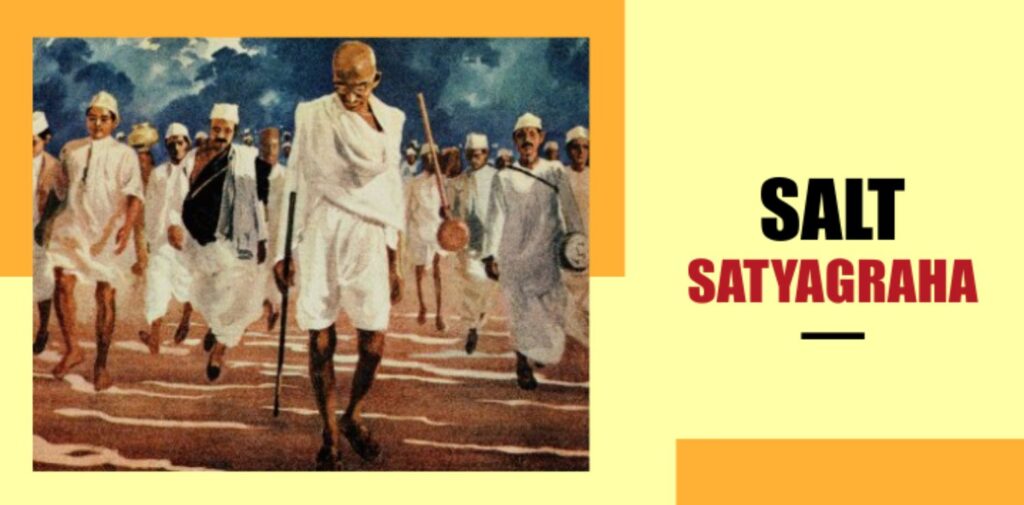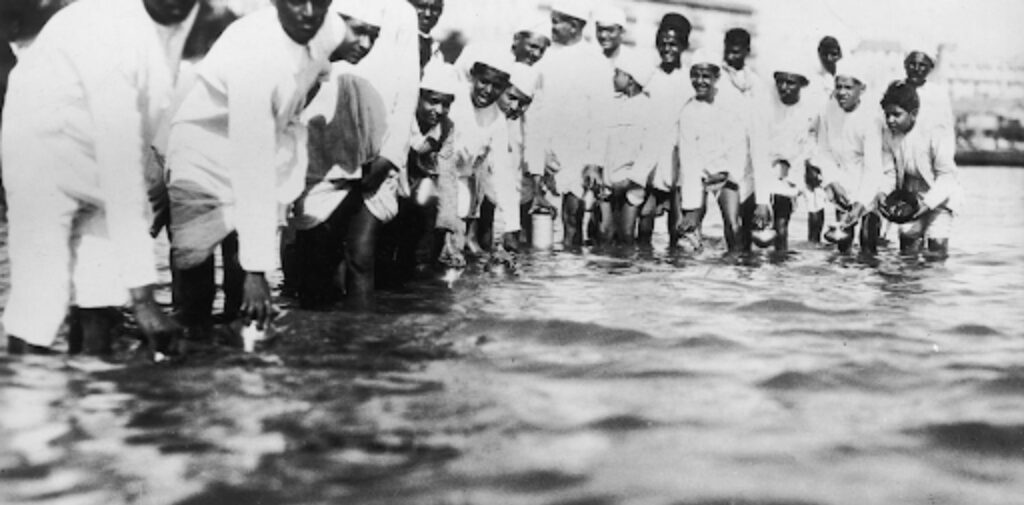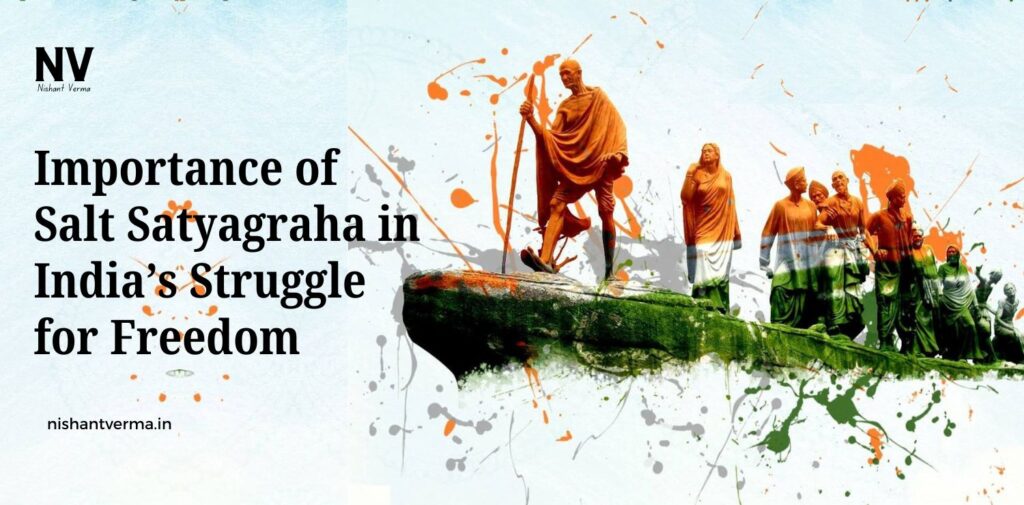The Salt Satyagraha, also known as the Dandi March, was one of the most significant events in India’s fight for independence from British colonial rule. Led by Mahatma Gandhi in 1930, the Salt Satyagraha became a turning point in the Indian freedom movement. It marked the beginning of a new phase of mass mobilization and civil disobedience against British imperialism. The Salt Satyagraha demonstrated the power of non-violent resistance and had a deep impact on the people of India and the British government.
This article will explore the Importance of Salt Satyagraha in India’s struggle for freedom, focusing on its impact, the strategies used, and the lasting legacy it left in the independence movement.
What Was the Salt Satyagraha?
The Salt Satyagraha was a non-violent protest against the British monopoly on salt production and the high taxes imposed on salt in India. The British government had imposed a salt tax that made it illegal for Indians to make or sell their own salt. This law was not only an economic burden but also a symbol of British control over everyday life in India. Salt, a basic necessity, was used by every Indian, regardless of their social or economic status. The salt tax was, therefore, a clear example of the unjust exploitation of the Indian population.
In response to this injustice, Mahatma Gandhi called for a mass protest in 1930. He decided to lead a march from Sabarmati Ashram in Ahmedabad to the coastal village of Dandi, a distance of approximately 240 miles. Gandhi’s aim was to break the salt law by making salt from the sea, thereby defying the British monopoly and drawing attention to the unjust policies of the colonial government.
The Salt Satyagraha became a symbol of peaceful resistance and civil disobedience, gaining the support of millions of Indians. The march began on March 12, 1930, and on April 6, Gandhi and his followers reached Dandi, where he made salt by evaporating seawater, openly violating the salt laws.

Salt Satyagraha: A Turning Point in India’s Independence Movement
1. A Nationwide Movement of Civil Disobedience
The Salt Satyagraha was not just about salt—it was a symbol of the broader resistance against British rule. Gandhi’s call for a boycott of British goods and the breaking of salt laws resonated with people across India. The Salt Satyagraha turned into a nationwide movement, with thousands of Indians participating in acts of defiance against the British government.
The significance of the Salt Satyagraha lay in the fact that it was a mass movement. While previous protests and uprisings had been confined to smaller sections of society, the Salt Satyagraha united people from all walks of life. It appealed to the common man, the farmers, workers, and even the urban middle class. Salt was something that everyone used, and its taxation affected all Indians, regardless of their social or economic status.
2. Empowerment of the Masses
One of the key impacts of the Salt Satyagraha was that it empowered the masses, particularly the rural population, to take part in the freedom struggle. Before this movement, much of the resistance to British rule had been led by elites and educated urban leaders. The Salt Satyagraha, however, brought together a diverse group of people—peasants, women, students, and workers—who had been largely excluded from the political discourse.
Gandhi’s message of non-violence and peaceful protest resonated deeply with the common people. He emphasized that everyone could contribute to the freedom struggle, regardless of their social status, and that every small act of defiance against British rule was important. This message led to a massive popular uprising across India, where people began to take matters into their own hands. They not only made salt in defiance of British laws but also boycotted British goods, picketed liquor shops, and participated in mass protests.
3. International Attention and Pressure on the British
The Salt Satyagraha attracted international attention, making the Indian independence movement a global issue. The British government, which had long relied on maintaining a favorable image of its empire, was unable to ignore the massive protests and civil disobedience that Gandhi had unleashed. News of the Salt Satyagraha spread to other parts of the world, and many international media outlets reported on the peaceful protests and the brutal repression faced by the protesters.
The Salt March and the subsequent protests highlighted the oppressive nature of British rule in India and put pressure on the British government. The British response, which involved the arrest of thousands of protesters, including Gandhi himself, only served to increase the movement’s visibility and gather more support for India’s cause. The Salt Satyagraha showed that the British could not suppress the Indian desire for independence with violence and repression alone.

4. A Symbol of Non-Violent Resistance
The Salt Satyagraha is perhaps most famous for its embodiment of non-violent resistance or Satyagraha, a method of protest pioneered by Mahatma Gandhi. Gandhi’s commitment to non-violence and peaceful protest inspired millions of Indians and became a central feature of the Indian freedom movement.
Unlike other independence movements around the world, India’s struggle for freedom was rooted in the principles of non-violence. Gandhi believed that it was important to resist injustice without resorting to violence. The Salt Satyagraha, through its peaceful methods, proved that it was possible to challenge a powerful empire without using violence.
The success of the Salt Satyagraha inspired other non-violent movements globally, influencing leaders such as Martin Luther King Jr. and Nelson Mandela, who later adopted similar methods of peaceful resistance in their own struggles for civil rights and freedom.
5. The British Response: Repression and Arrests
In response to the Salt Satyagraha, the British government used harsh measures to suppress the protests. Thousands of protesters were arrested, including many prominent leaders of the Indian National Congress. Gandhi himself was arrested on May 5, 1930, which only heightened the public’s outrage and determination to continue the struggle.
The British authorities also used violence to control the protesters, leading to the deaths of several innocent individuals. The brutal repression faced by the people only strengthened the resolve of the Indian public to continue their fight for independence. The government’s use of force made it clear that they were unwilling to grant India the freedom it demanded, further exposing the injustices of British rule.
6. Impact on Indian National Congress and the Freedom Struggle
The Salt Satyagraha marked a significant shift in the nature of the Indian National Congress (INC) and its role in the independence movement. Before the Salt Satyagraha, the INC had mainly engaged in constitutional and political efforts to achieve self-rule. However, with the success of the Salt March and the mass civil disobedience that followed, the INC took on a more direct, confrontational role in challenging British rule.
The Salt Satyagraha united people across India and brought attention to the INC’s demand for Purna Swaraj (complete independence) from British rule. After the Dandi March, the INC’s leadership became more assertive in demanding self-rule. The Salt Satyagraha laid the groundwork for future mass movements, including the Quit India Movement of 1942, which ultimately led to India’s independence in 1947.

Lasting Legacy of the Salt Satyagraha
The Salt Satyagraha was not just an event in the freedom struggle; it became a symbol of the Indian people’s resilience, unity, and determination in the face of oppression. The movement demonstrated the power of peaceful protest and civil disobedience in the fight for justice. It showed that ordinary people, through non-violent means, could challenge the might of a colonial empire.
In addition to its role in the freedom struggle, the Salt Satyagraha also had a profound impact on the social fabric of India. It brought together people from different religions, regions, and communities to fight for a common cause. It empowered women and marginalized groups to participate in public protests and leadership roles. The Salt Satyagraha also helped raise awareness about the importance of self-reliance and the rejection of foreign goods, which was crucial in fostering a sense of Indian identity and self-determination.
Conclusion: Importance of Salt Satyagraha
The Salt Satyagraha was one of the most important events in India’s struggle for freedom. It marked a turning point in the freedom movement, where non-violent resistance became the central strategy in challenging British rule. Gandhi’s leadership, the participation of millions of ordinary Indians, and the widespread international attention brought by the Salt March all contributed to the success of this movement. The Salt Satyagraha not only helped to unite India in its fight for independence but also showed the world the power of peaceful resistance in achieving social and political change.
The legacy of the Salt Satyagraha continues to inspire movements for justice, equality, and freedom around the world.




